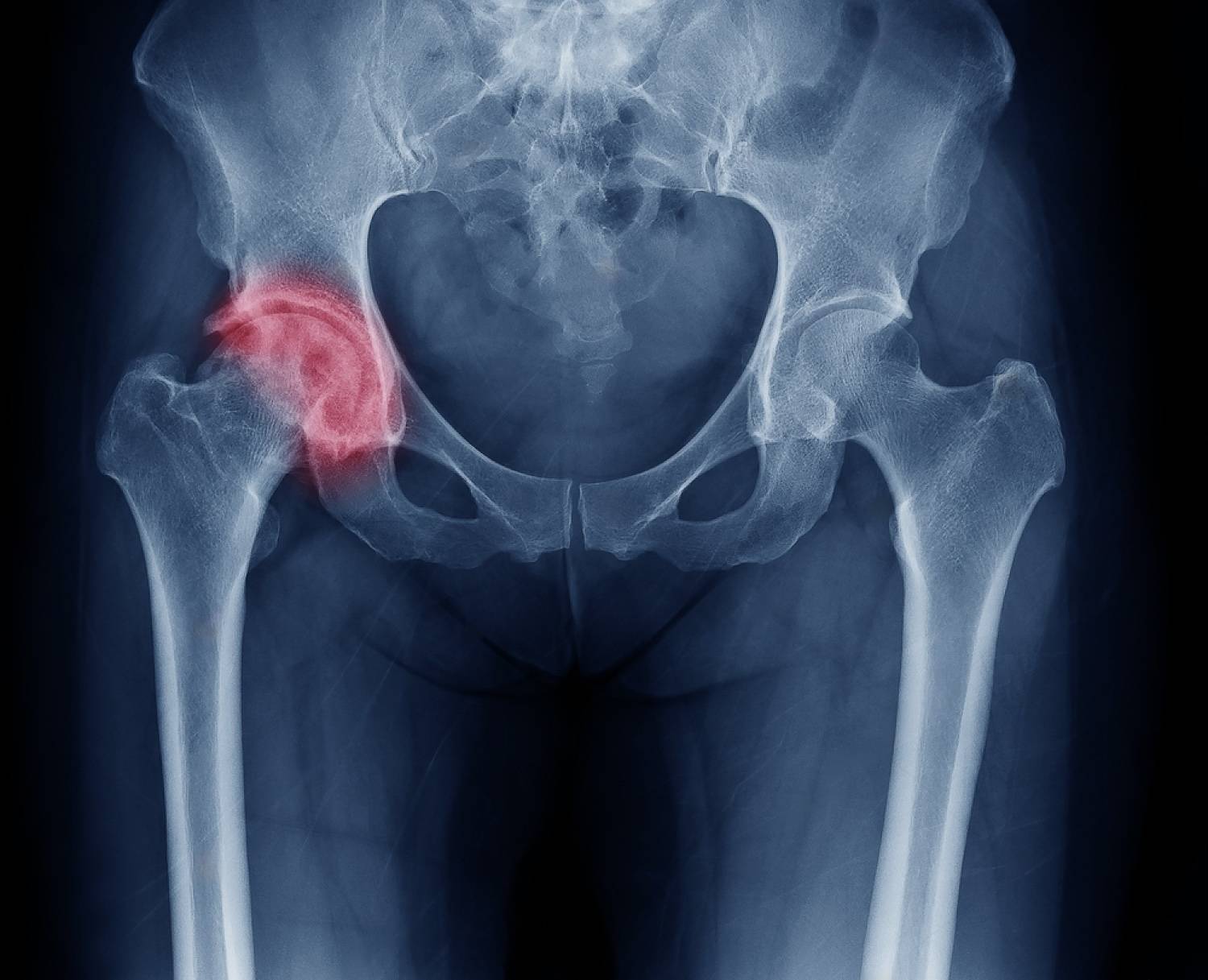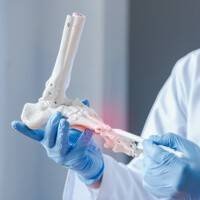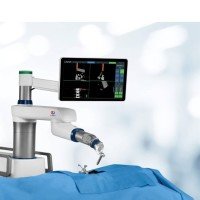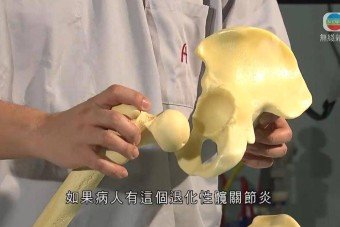Hip arthritis and other joint conditions may render daily activities very difficult, with pain experienced during walking, sitting, and even standing. This significantly impacts the patient's quality of life. If medication and walking aids are ineffective in relieving the pain, the orthopedic surgeon will recommend considering a hip replacement surgery. This procedure can effectively alleviate the pain and help the patient recover their normal lifestyle.
What is Hip Arthritis?
The hip joint connects the lower limbs to the torso and is one of the largest joints in the human body. It is primarily composed of the thigh bone (femur) and the pelvic bone, and is responsible for supporting the body’s weight and controlling the movement of the legs. Hip arthritis or hip joint disease refers to the symptoms caused by degeneration, inflammation and injury to the cartilage and related structures of the hip joint. Since the hip joint is surrounded by thick layers of muscle, the symptoms of redness, swelling, and heat that are associated with joint inflammation are often less apparent.
The main types of hip joint diseases or hip arthritis can be divided into:
- Avascular necrosis of femoral head
- Degenerative osteoarthritis
- Rheumatoid arthritis
- Congenital hip dysplasia, etc.
Among these four types of arthritis, avascular necrosis and degenerative osteoarthritis are the most common.
Symptoms of Hip Joint Diseases
The following will analyze the common symptoms of hip joint diseases, to help you to detect the symptoms early and receive timely treatment
- Pain: The pain is usually felt in the groin area or inner thigh. The pain can be dull, sharp, or a deep ache, and it often worsens with activity such as walking, climbing stairs, squatting or standing up.
- Stiffness: The hip joint may feel stiff, especially in the morning after waking up or after remaining in one position for a long time. This makes it difficult to bend, straighten or rotate the hip. Activities like putting on shoes and socks or cutting toenails can become challenging.
- Limping: To alleviate the pain, the patient may develop an unconscious limp while walking.
- Restricted daily activities: Tasks like walking and climbing stairs become difficult.
- Joint noises: Grinding, popping, or clicking sounds may be heard when moving the hip joint.
- Uneven leg lengths: The patient may perceive a difference in the length of their legs.

Diagnostic methods for hip arthritis
First, the orthopaedic surgeon will conduct history taking to understand how the hip joint pain affects the patient’s daily life. The doctor will inquire about the presence of the above mentioned symptoms, what activities alleviate or exacerbate the pain, the patient’s medical history, whether a walker is needed for walking. If any pain medications are being taken, and how long the patient can walk on flat ground, in order to understand the cause and severity of the disease. The doctor will also inquire about the patient's ability to go up and down stairs, such as whether handrails are needed for assistance.
Then, the doctor will perform physical examination on the patient, evaluating the range of motion, strength, and weight-bearing capacity of the hip joint. Afterwards, the doctor will arrange for an X-ray examination. Through imaging, the type and stage of hip joint disease can be determined. For example, in the case of degenerative hip osteoarthritis, the X-ray can show the formation of bone spurs in the hip joint, increased bone density under the joint surface, and narrowing of the space between the femoral head and the acetabulum.
Depending on the patient's physical condition, magnetic resonance imaging (MRI) may also be performed if necessary, to further confirm the condition of the hip joint bones and soft tissues.
Understanding Total Hip Replacement Surgery
Total hip replacement surgery is a common orthopedic procedure. When the hip joint is severely damaged due to disease or injury, causing pain that cannot be alleviated through medication and other non-surgical options, the doctor will, based on the patient's condition, choose to perform surgery. In this procedure, the damaged femoral head, acetabulum, and cartilage are removed, and the relevant artificial joint components are then implanted. This is why it is also referred to as "total hip replacement".
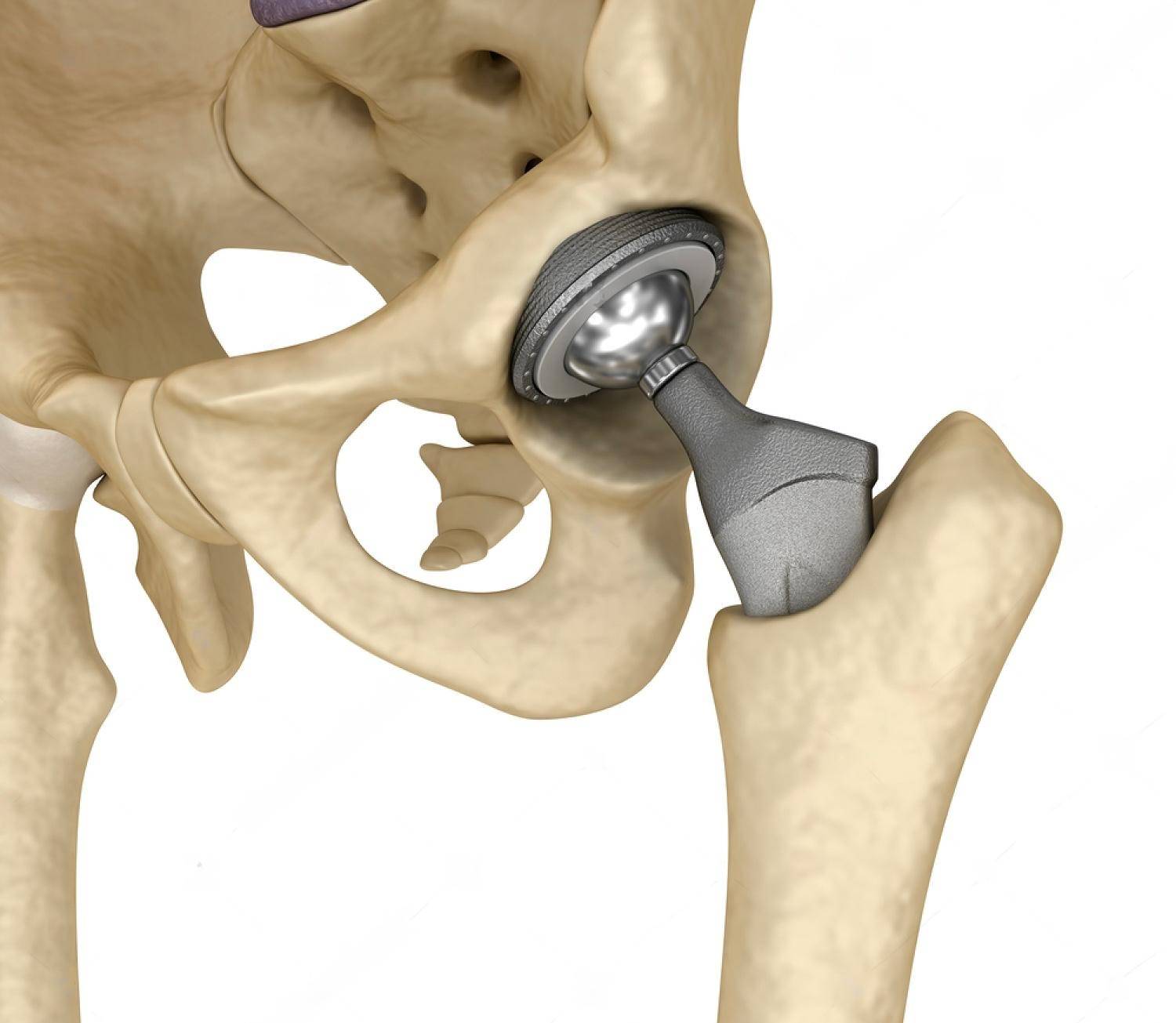
Surgical Outcomes
Hip replacement surgery can effectively alleviate the symptoms caused by hip joint problems:
- Reduces joint stiffness and improves mobility
- Relieves pain, eliminating the need for pain medication
- Improves stability when walking, reducing the risk of falls and fractures
- Allows for longer walking distances, which helps with weight management and overall health
- Enables the performance of daily activities, such as sitting, standing, and climbing stairs
Components of a Total Hip Replacement
The design of a total hip replacement mimics the structure and function of the natural human hip joint, consisting of two main components: the acetabula component and the femoral component.
- Acetabula Component:
A bowl-shaped component made of metal that is implanted into the pelvic bone to replace the original acetabulum, providing a stable socket. - Liner
The structure inside the Acetabular, serving as the joint interface, is made of wear-resistant mate rials to facilitate joint movement. The common materials are highly cross-linked polyethylene or ceramic. - Femoral Stem
Cylindrical metal stem that is implanted into the medullary cavity of the femur, providing a secure fixation. - Femoral Head
A spherical metal or ceramic component that attaches to the femoral stem and articulates with the liner in the acetabular components, recreating the ball-and-socket joint.
Materials Used in Total Hip Replacements
Total hip replacements utilize a combination of metals, plastics, and ceramics, with different materials used for the various components. The metallic components use titanium alloys and cobalt-chromium alloys. These metals do not corrode, are biocompatible, and do not cause any rejection reactions in the body.
As for the joint articulating surfaces, these are primarily made of plastic (highly cross-linked polyethylene) as well as ceramic materials. Both of these materials have excellent wear resistance, allowing them to withstand the repeated joint motion over many years of activity.
Lifespan of Artificial Hip Joints
With medical advancements, the materials and designs of modern artificial joints have significantly improved. The key difference lies in the materials used for the joint articulating surfaces. Since the 2000s, the introduction of new materials, especially highly cross-linked polyethylene plastics, have greatly enhanced the wear resistance of artificial joints. Nowadays, over 90% of artificial hip joints have a lifespan of at least 10 years, and around 80% can last up to 20 years. Provided they are properly maintained, artificial hip joints can now be used for the lifetime of the patient. The improved materials, especially the plastic and ceramic joint surfaces, are able to withstand the repeated motion and stresses of everyday joint usage over many years.
Surgical Procedure
Here is a brief overview of the steps involved in a total hip replacement surgery:
- The orthopedic surgeon determines the incision location, which may be in the back side or front of the hip, based on the patient’s specific condition,
- The damaged femoral head (top of the thigh bone) and acetabulum (hip socket) are removed.
- The bone surfaces of the femur and acetabulum are prepared and reshaped to accommodate the artificial joint components.
- The acetabula (hip socket) component and the femoral (thigh bone) component are separately implanted into the acetabulum and femur, respectively.
- The artificial joint is then reassembled by connecting the acetabular and femoral components together.
- The incision is closed using advanced suturing techniques, and specialized wound dressings are applied.
Robotic-Assisted Total Hip Replacement Surgery
Robotic-Assisted Total Hip Replacement Surgery has been introduced to Hong Kong in recent years, combining traditional surgical techniques with modern technology to achieve precise surgical outcomes, with the aim of enhancing the accuracy and safety of the procedure.
Prior to the surgery, the patient undergoes a CT scan, which is used to develop a pre-operative 3D computer model of the patient's anatomy. The doctor can then plan the specific size and positioning of the acetabular (hip socket) and femoral (thigh bone) components based on the individual patient's actual conditions.
During the surgery, the doctor operates the robotic arm to grind and prepare the acetabular side, which helps to achieve more precise and safer bone preparation while minimizing trauma to the surrounding soft tissues. The placement of the hip joint prosthesis is also controlled by the robotic arm, which can accurately adjust various clinical parameters such as leg length and offset to achieve the most precise positioning of the hip joint prosthesis.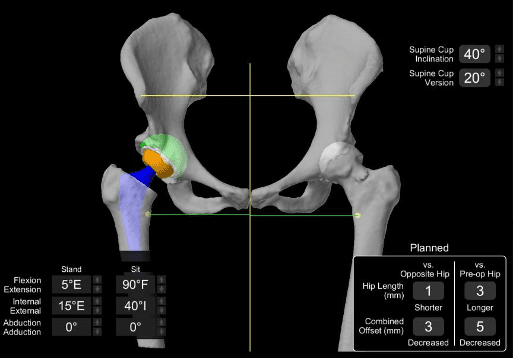
Benefits of Robotic-Assisted Total Hip Replacement Surgery
- High Precision: International medical research has shown that robotic-assisted technology has higher precision compared to traditional surgery. Based on post-operative X-rays, the placement of the hip prosthesis in robotic-assisted total hip replacement is closer to the surgeon's pre-operative plan, reducing surgical errors.
- Enhanced Safety: Through pre-operative CT scanning, the surgeon can lock in the depth and boundaries of the robotic bone resection. Robotic systems with haptic control can also avoid errors during bone resection, reducing damage to surrounding soft tissues and bleeding.
- Faster Recovery: With less soft tissue trauma and bleeding, patients tend to have a relatively shorter recovery time.
- Prolonged Prosthesis Lifespan: The more precise placement and positioning of the implanted artificial joint components can help extend the lifespan of the prosthesis.
Daily life precautions after a total hip replacement surgery
- Follow the doctor's instructions and avoid using prohibited positions in daily life.
- Perform the rehabilitation exercises taught during the hospital stay on a daily basis.
- Use a cane or walker for daily activities.
- Opt for showers for bathing.
- Gradually increase activity level while ensuring sufficient rest.
- Driving and sexual activity can be resumed after 6 weeks post-surgery.
- If the surgical site exhibits redness, swelling, or pain; if there is a fall resulting in hip injury; if the activity level cannot be increased; or if there are any abnormal sounds from the hip, immediately return to the hospital for an examination.
Risks Associated with Hip Replacement Surgery
Every surgery carries certain risks, and hip replacement surgery is no exception. The general risks associated with hip replacement surgery include:
- Wound infection
- Postoperative pneumonia
- Myocardial infarction
- Stroke
Risks and complications specifically related to hip replacement surgery include:
- Blood loss
- Nerve and blood vessel damage
- Deep vein thrombosis and pulmonary embolism
- Hip joint infection
- Joint stiffness
- Dislocation of the joint
- Leg length discrepancy (short leg), etc.
Overall, hip replacement surgery is a safe and effective surgical treatment that helps patients regain normal walking function and quality of life. If you have any questions about total hip replacement surgery, it is recommended to consult an orthopedic specialist to understand the details.


